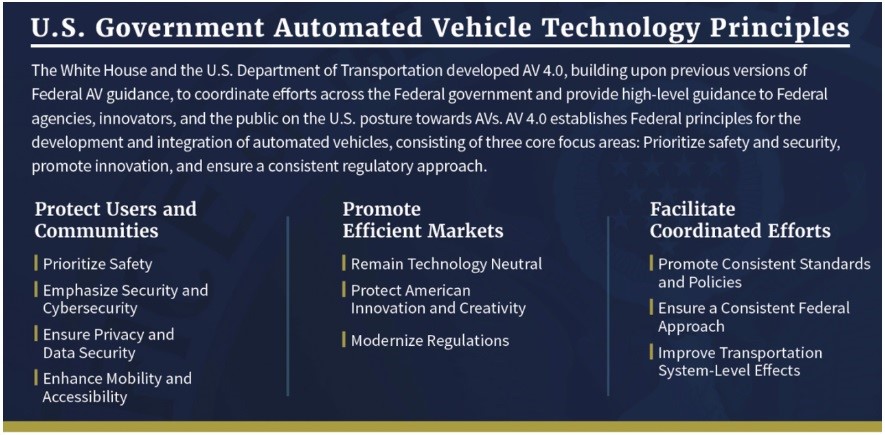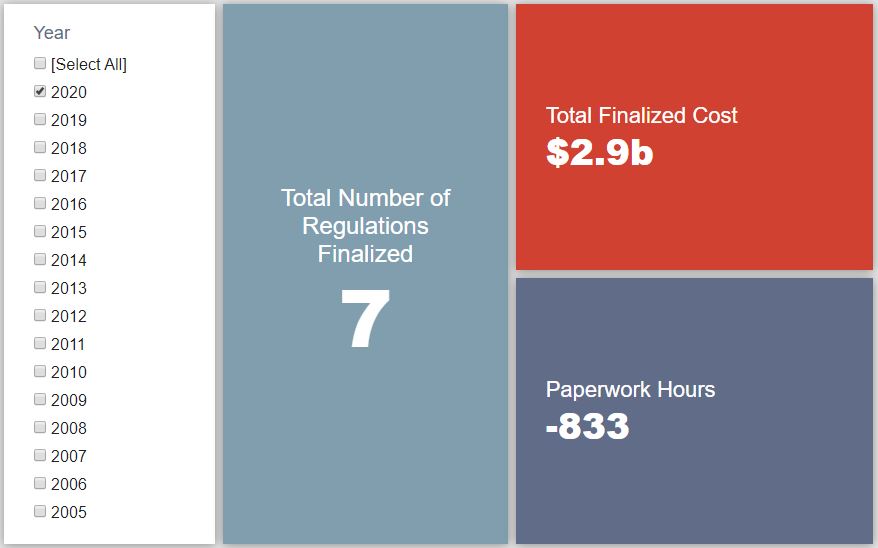Week in Regulation
January 13, 2020
The Night of the Living Regs
The first full week of 2020 saw significant “new” regulatory costs, due primarily to a bit of administrative necromancy. A series of Department of Energy (DOE) efficiency standards that were supposed to officially hit in the books at the end of the Obama Administration have since been stuck in limbo. Thanks to a recent court order, however, they officially rose from their grave and landed in the pages of the Federal Register last week. Across all rulemakings, agencies published $3.1 billion in total net costs and added more than 11.8 million hours of annual paperwork.
REGULATORY TOPLINES
- 2020 Proposed Rules: 28
- 2020 Final Rules: 52
- 2020 Total Pages: 1,726
- 2020 Final Rule Costs: $2.9 billion
- 2020 Proposed Rule Costs: $765 million
TRACKING THE REGULATORY BUDGET
The set of zombie DOE regulations presents a peculiar situation in terms of the regulatory budget. The quartet of rules establish efficiency standards for portable air conditioners, uninterruptible power supplies, air compressors, and commercial packed boilers. The agency estimates that they bring combined present value costs of roughly $2.4 billion (discounted at a 7 percent rate). Normally, this would be a substantial amount in the regulatory column for the fiscal year (FY) 2020 under Executive Order (EO) 13,771, but considering the circumstances we are excluding it from that tally.
Rewind to December 2016. DOE publishes each the four rules on its website, thus making them publicly available. The invocation of a little-known “error correction rule,” however, delayed their official publication in the Federal Register pending further review. That “review” continued onward until a group of interested parties brought a suit challenging DOE’s seemingly indefinite review. In October 2019, the Ninth Circuit Court of Appeals concurred with their arguments and ordered that the rules finally become officially published. As such, despite their temporal inclusion in the 2020 volume of the Federal Register (and potentially the FY 2020 budget), they were quite clearly intended for publication under the Obama Administration in either late December 2016 or early January 2017. The complete absence of any EO 13,771 discussion in their preambles and their “Other” designation in recent Unified Agendas further bolsters this claim.
Since there were no other actions applicable to EO 13,771, the FY 2020 tally remains stagnant for the week. The Trump Administration expects to reach $51.6 billion in cumulative net savings in FY 2020. To date in the fiscal year, agencies have finalized 35 deregulatory actions and 13 regulatory actions, totaling $2.6 billion in quantified total net costs.
THIS WEEK’S REGULATORY PICTURE
This week, the U.S. Department of Transportation (DOT) updates its plan for regulating autonomous vehicles (AVs).

At the annual Consumer Electronics Show this week, Secretary of Transportation Elaine Chao unveiled DOT’s latest guidance for AVs. The image above displays the broad principles that will drive federal decision making in this area.
Of most interest to those following regulatory policy is the principle of modernizing regulations. According to the report, this principle consists of three main components. The first is to modernize or eliminate federal rules that could unnecessarily hamper the development of AVs. The second is to utilize federal rulemaking authority to ensure consistency of state and local laws — in other words, making sure one state or local government does not set an impossible standard that becomes a de facto national standard. The third component is that when regulation is necessary, the United States will aim for performance-based rules with as little prescription as needed.
The clear goal of the Trump Administration is to ensure that it helps foster the development of AVs, rather than unnecessarily impede it. Ultimately, its ability to adhere to this position will likely depend on the public’s trust and confidence in AVs and the public’s willingness to accept pitfalls, including accidents, that will occur as technology develops.
TOTAL BURDENS
Since January 1, the federal government has published $3.7 billion in total net costs (with $2.9 billion in finalized costs) and 11.8 million hours of net annual paperwork burden increases (with 833 hours cut by final rules). Click here for the latest Reg Rodeo findings.












